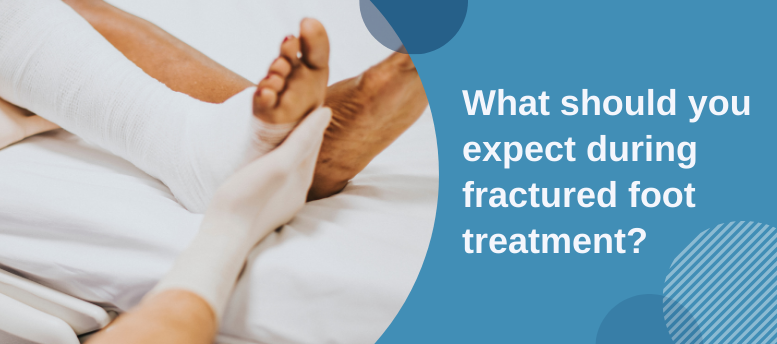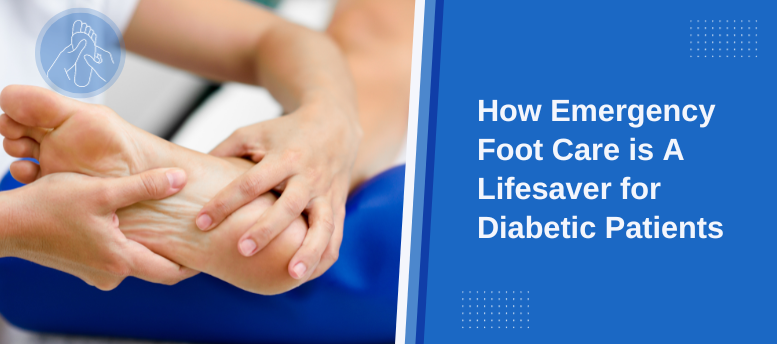Ankle sprains are one of the most common injuries that occur in the US. If you’ve ever experienced a sprained ankle, then you know exactly what severe pain feels like. That “sprain” however, could have been a strained – or even broken – ankle. The amount of pain caused by sprains and strains are almost the exact same, and the only way to determine which injury is the cause of your pain is to visit an emergency podiatrist.
The terms “sprain” and “strain” are often used interchangeably, but in reality there are several key differences between the two. In order to understand the differences between the two, you must first understand what tendons and ligaments are.
Tendons connect the bones to muscles. Ligaments, on the other hand, connect bones to bones within a joint. When you strain your ankle, you have torn or overstretched the tendon. If you have sprained your ankle, that means you have torn or overstretched the ligament.
Sprains
An injury from a fall, twist, or blow to the ankle can result in a sprain that stresses a joint and overstretches, or even ruptures, the ligaments that support that joint. A sprained joint is the most common type of ankle injury. Sprains can be mild, moderate, or severe.
- Mild sprain
The ligament is stretched, but the ligament is not loosened and remains stable. - Moderate sprain
The ligament is partially torn and the joint becomes unstable. - Severe strain
The ligament has been torn completely or separated from the bone interfering with how the joint functions. You may hear a pop or feel a tear in the joint.
Although the severity of ankle sprains may vary, they all share common symptoms including pain, bruising, swelling, and inflammation. You are also more likely to experience a sprained ankle if you’ve had one in the past. Repeat sprains are common in sports injuries, and can lead to arthritis in the ankle, tendon injury, or a loose ankle.
Strains
An acute ankle strain is caused by pulling or stretching a muscle or tendon. Chronic ankle strains are the result of overusing tendons and muscles through repetitive, prolonged movement like running or jumping. When an ankle strain is severe, the tendon, muscle, or both are completely or partially ruptured resulting in serious injury. Not resting during intense training and exercise can result in a strain.
Common symptoms of an ankle strain are:
– moderate to severe pain
– muscle weakness
– swelling
– inflammation
– muscle spasm
Treatment Options
The severity of an ankle injury will determine the best course of treatment. Sprains and strains that are mild may require rehab exercises and a change in activity levels while you recover. A severe sprain or strain may require you to be immobile or result in surgery.
In all but the most mild cases, foot and ankle urgent care is needed to evaluate the extent of your injury to form a treatment and rehabilitation plan.
Rest, ice, compression, and elevation (RICE) can help minimize the damage caused by sprains and strains, and should be started immediately after an injury. RICE reduces swelling, relieves pain, and speeds the recovery process and is often considered to be the best treatment option for soft tissue injuries. Do every part of RICE treatment at the same time.
REST – Keep the injured area as still as possible in order for healing to begin.
ICE – Inflammation causes more pain and slows healing, so you need to ice your ankle right away. Wrap an ice pack in a thin towel and apply to the ankle for 15 to 20 minutes, 3 to 4 times a day.
COMPRESSION – An elastic pressure bandage can help reduce or prevent swelling. Avoid wrapping the ankle so tight that it cuts off the blood supply to the ankle.
ELEVATION – You need to raise the injured ankle above the level of your heart by propping it up on pillows while resting it. Lie down if necessary to get your ankle above your heart level.
The recovery time for sprains and strains will vary based on the extent of the injury, the health of the patient, or a number of other factors. Some people can return to normal life within a few weeks, but others may need as much as six months of recovery time.
If you believe you have recently sustained an ankle sprain or strain, you should contact a podiatrist in thousand oaks as soon as possible to avoid further injury. Each of our clinics specialize in the treatment of foot and ankle problems with on-site Podiatrists who have an average of 15 years experience in treating all medical and surgical issues of the foot and ankle. We’ll determine the extent of your injury to establish the best course of treatment to get you on the road to recovery. Contact us today to schedule a consultation.




